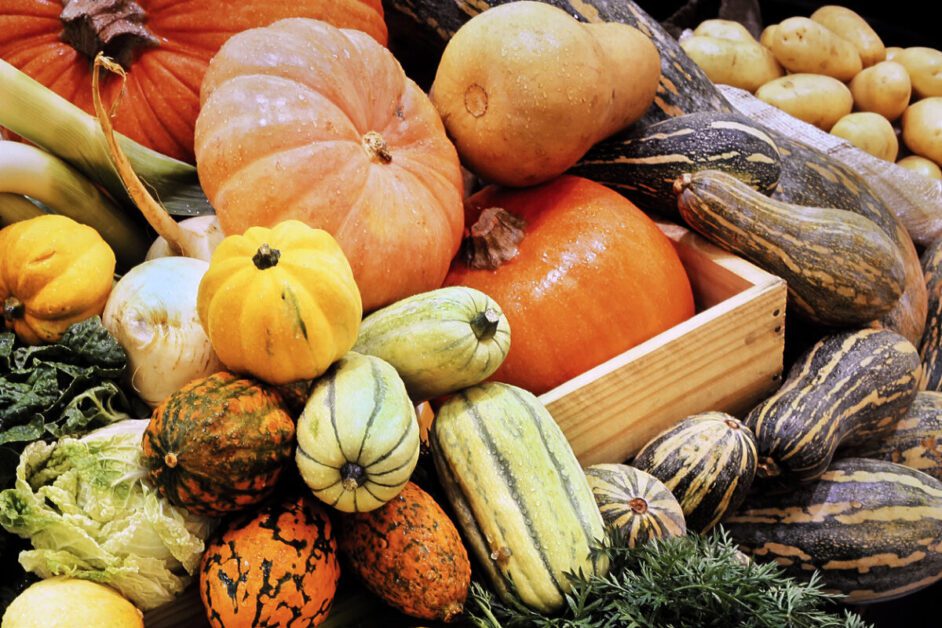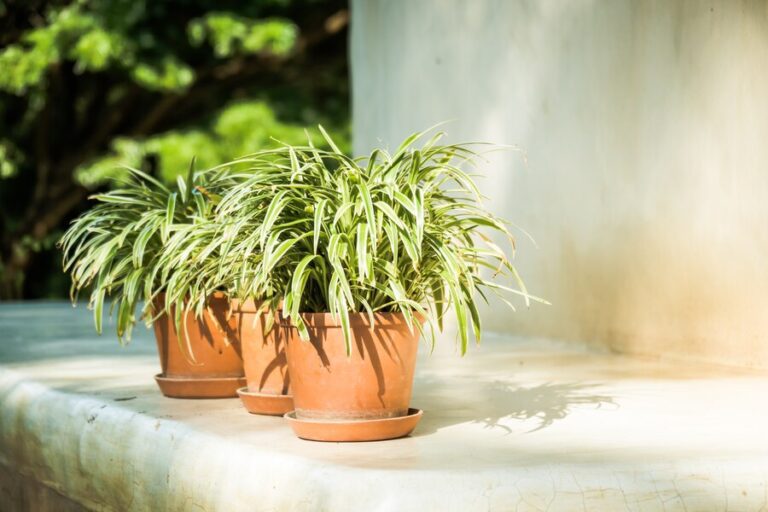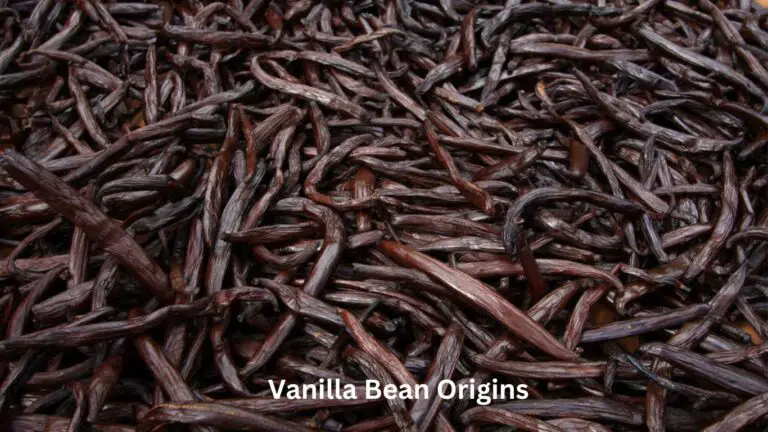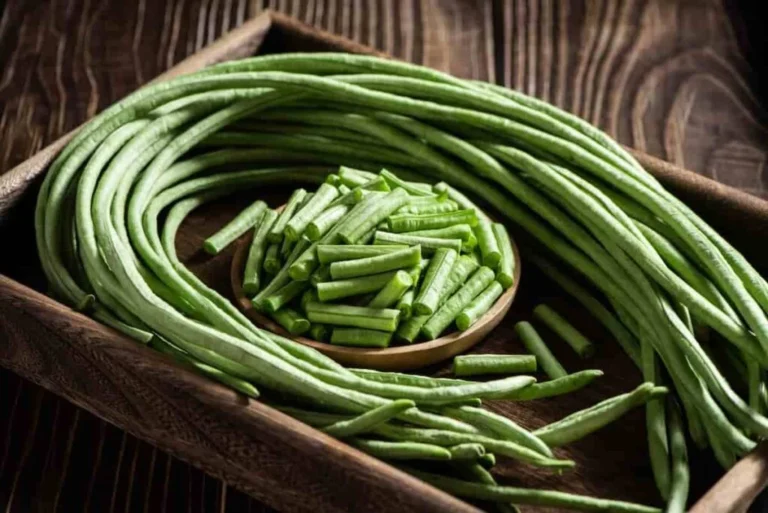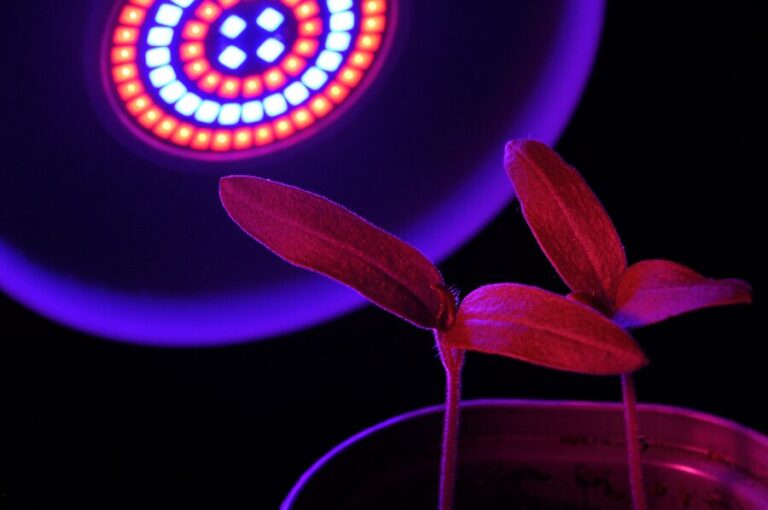Storing Squash: Techniques for Long-Lasting Freshness
Choosing the Right Storage Environment
Creating the ideal storage environment for your squash is crucial in preserving its freshness and quality for an extended period of time. To ensure that your squash stays in optimal condition, it’s important to consider factors such as temperature, humidity, and exposure to ethylene gas.
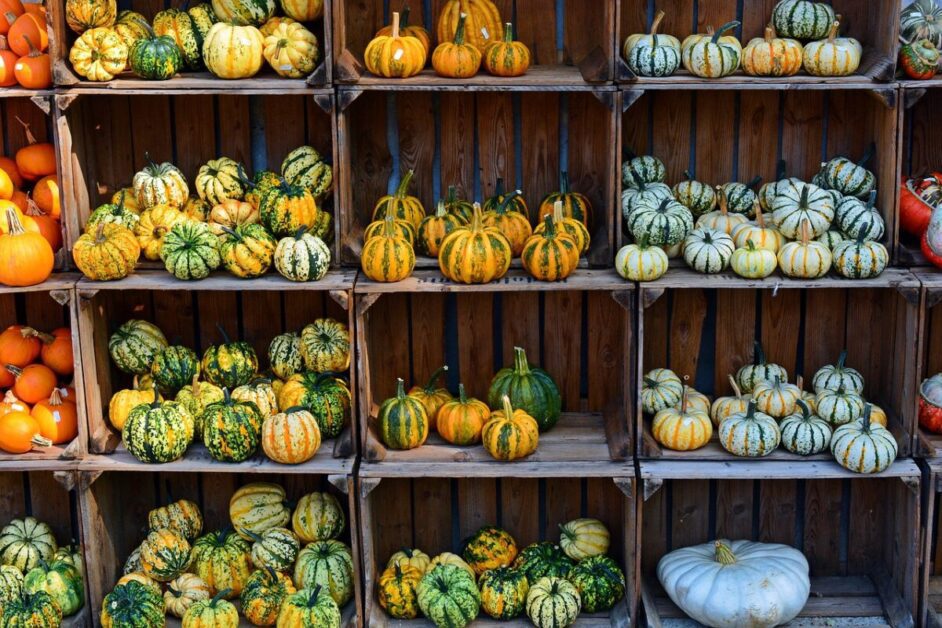
Temperature plays a vital role in maintaining the quality of your squash. Ideally, the best temperature for storing squash ranges from 45 to 50 degrees Fahrenheit (7 to 10 degrees Celsius). Temperatures lower than this range can cause chilling injury, while higher temperatures can accelerate spoilage. It is essential to store squash away from heat sources such as sunlight, ovens, or radiators, as excessive heat can speed up the deterioration process. Additionally, fluctuations in temperature should be avoided as they can contribute to premature decay. By storing your squash at the recommended temperature, you can extend its shelf life and retain its taste and texture.
The Best Temperature for Storing Squash
Squash is a versatile and delicious vegetable that can be enjoyed in various recipes throughout the year. To ensure the best quality and freshness, it is important to store squash at the proper temperature. The ideal temperature for storing squash is around 50 to 55 degrees Fahrenheit (10 to 13 degrees Celsius).
Storing squash in this temperature range helps to prolong its shelf life and maintain its flavor and texture. Temperatures below 50 degrees Fahrenheit (10 degrees Celsius) can cause chilling injury, leading to decay and a loss of quality. On the other hand, temperatures above 55 degrees Fahrenheit (13 degrees Celsius) can accelerate the ripening process and result in mushy or overripe squash. Therefore, it is crucial to find a cool and consistent storage environment that meets these temperature requirements.
Preventing Moisture Buildup
Excess moisture can quickly deteriorate the quality of stored squash, making it important to take steps to prevent moisture buildup. One effective method is to ensure proper ventilation in the storage area. Good airflow helps to reduce humidity levels and prevent condensation from forming on the squash, which can lead to rot and mold growth. It is advisable to place the squash on open racks or shelving units rather than directly on the floor or against walls, as this allows air to circulate around the produce.
Another useful strategy is to monitor the humidity levels in the storage area. Ideally, the relative humidity should be around 50-60% for optimal squash preservation. Using a hygrometer, a device that measures humidity, can help you keep track of the moisture levels and make necessary adjustments. If the humidity is too high, using dehumidifiers or installing fans can help reduce excess moisture. On the other hand, if the humidity is too low, you can introduce moisture by placing a small container of water in the storage area. Regularly checking and maintaining the humidity levels will go a long way in preventing moisture buildup and extending the shelf life of your squash.
Properly Cleaning Squash Before Storage
Cleaning squash properly before storage is essential to ensure its longevity and maintain its quality. Before you start the cleaning process, remove any dirt or debris from the surface of the squash using a soft brush or cloth. This preliminary step will help prevent the spread of bacteria and ensure a thorough cleaning.
Once the visible dirt is removed, it’s important to sanitize the squash to eliminate any lingering bacteria. One effective method is to use a mixture of one part vinegar to three parts water. Dip a clean cloth or sponge into the solution and gently wipe the entire surface of the squash. Vinegar’s natural antimicrobial properties will help eliminate any potential pathogens present on the surface. Alternatively, you can also use a food-grade hydrogen peroxide solution for sanitizing. Be sure to rinse the squash thoroughly with water after sanitizing to remove any vinegar or hydrogen peroxide residue.

By taking the time to properly clean your squash before storage, you can ensure that it stays fresh and free from contamination. This simple yet crucial step will contribute to maintaining the quality and flavor of your squash, allowing you to enjoy its deliciousness for an extended period. Remember, cleanliness is key when it comes to maximizing the shelf life of your harvested squash.
The Importance of Inspecting for Any Damage
Inspecting squash for any damage is a crucial step in ensuring its optimal storage and shelf life. Even the smallest blemish or bruise can quickly escalate and affect the entire squash, leading to rot and spoilage. By carefully examining each squash before storage, you can effectively identify and address any potential issues.
One common problem to watch out for is cuts or punctures on the squash’s skin. These openings provide an easy entry point for bacteria and molds, accelerating the deterioration process. Additionally, any signs of mold or mushiness should be promptly addressed, as these are clear indicators of spoilage. By removing affected squash from your storage, you can prevent the spread of decay and preserve the quality of the remaining produce.
Regular inspections not only help prevent spoilage but also allow you to make the most of your squash. By identifying damaged or overripe squash, you can prioritize their use in recipes that require immediate consumption or processing. This proactive approach not only reduces food waste but also ensures you’re utilizing your produce at its peak. Remember, a thorough inspection is a vital step in maintaining the freshness and quality of your squash throughout its storage period.
Using the Right Containers for Storage
Choosing the right containers for storing squash is crucial in order to maintain its freshness and quality over an extended period of time. When selecting containers, it is important to opt for ones that are durable, airtight, and moisture-resistant. This will not only help to prevent any potential damage to the squash, but also keep it safe from external factors that can lead to deterioration. Glass or plastic containers with tight-fitting lids are often the preferred choice for squash storage, as they provide an effective barrier against moisture and air. Transparent containers also allow for easy visibility, making it convenient to identify the type of squash stored inside without having to open the container.
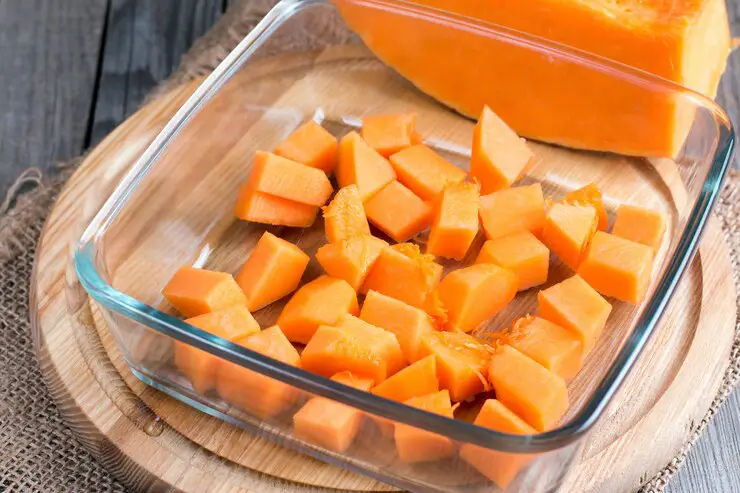
Additionally, it is advisable to choose containers that are appropriately sized to accommodate the squash without excessive empty space. This helps to minimize the amount of air trapped inside, reducing the risk of spoilage. When transferring squash into containers, it is important to handle them with care and ensure that they are arranged in a single layer, if possible, to maintain their shape and integrity. By using the right containers and following proper storage techniques, you can enjoy the freshness and flavors of your squash for a longer period, enhancing your culinary experience and reducing waste.
Maximizing Freshness with Vacuum Sealing
Vacuum sealing is a highly effective method for maximizing the freshness and quality of stored squash. By removing excess air and creating a tight seal, vacuum sealing helps to prevent oxidation and moisture loss, which are the primary causes of spoilage in squash.
When squash is exposed to oxygen, it undergoes a natural process called respiration, which leads to the breakdown of nutrients and the deterioration of texture and flavor. Vacuum sealing eliminates this exposure, effectively slowing down the respiration process and allowing the squash to retain its freshness for a longer period.
Furthermore, vacuum sealing helps to preserve the natural moisture content of squash. Moisture loss can cause the squash to become dry and shriveled, compromising its taste and texture. By creating a sealed environment, vacuum sealing helps to maintain the ideal moisture balance, ensuring that the squash remains juicy and flavorful.
In addition to extending the shelf life of squash, vacuum sealing also offers the advantage of efficient space utilization. By removing excess air, vacuum-sealed bags or containers take up less space in the storage area, allowing for better organization and maximizing storage capacity.
Overall, vacuum sealing is a valuable technique for anyone looking to prolong the freshness and quality of their stored squash. Whether you are a seasoned gardener or a beginner enthusiast, implementing this method will help ensure that your squash remains in optimal condition for an extended period, allowing you to enjoy its delicious flavors throughout the year.
Avoiding Exposure to Ethylene Gas
Exposure to ethylene gas can significantly reduce the shelf life and quality of squash. Ethylene is a natural plant hormone that acts as a ripening agent. While it is beneficial for some fruits and vegetables, it can have detrimental effects on squash, causing it to deteriorate prematurely. To avoid exposure to ethylene gas, it is important to store squash away from ethylene-producing fruits such as apples, bananas, and tomatoes.
When stored in close proximity to ethylene-producing fruits, squash can ripen and spoil much faster than desired. This can result in softening, discoloration, and unpleasant flavors. To maintain the freshness and extend the shelf life of your squash, it is advisable to store it in a separate area or container away from other fruits and vegetables that emit ethylene gas. By doing so, you can ensure that your squash remains in optimal condition for a longer period of time, allowing you to enjoy its delicious flavors and nutritional benefits.
The Benefits of Storing Whole Squash
Storing whole squash provides numerous benefits that can help extend its shelf life and preserve its quality for longer periods. One of the key advantages is that storing squash whole helps maintain its natural protective layer, known as the rind or skin. The rind acts as a barrier, shielding the fruit from external factors that can accelerate spoilage, such as moisture loss or microbial contamination.
Moreover, keeping squash intact until ready for use reduces the risk of nutrient loss. The flesh of squash contains essential vitamins, minerals, and antioxidants that contribute to a healthy diet. By delaying the cutting or slicing process, you can maximize the nutritional value of the vegetable, ensuring that you reap the full benefits when consuming it. Additionally, storing whole squash helps to retain its vibrant colors and flavors, creating a more appealing and enjoyable culinary experience. Whether you’re using squash in soups, stir-fries, or roasted dishes, preserving its freshness by storing it whole can have a significant impact on the final taste and appearance.
The table below shows us the benefits of storing whole squash:
| Benefit | Description |
|---|---|
| Extended Shelf Life | Storing whole squash can prolong its freshness and shelf life compared to cut or peeled squash, which tend to spoil more quickly. |
| Retains Nutritional Value | Keeping squash whole helps preserve its nutrients, including vitamins A and C, potassium, and fiber, ensuring maximum nutritional benefits when consumed. |
| Versatility in Use | Whole squash can be prepared in various ways, such as roasting, steaming, baking, or pureeing, offering flexibility in culinary applications. |
| Cost-Effective | Buying whole squash in bulk and storing them can be more cost-effective than purchasing pre-cut squash, reducing overall grocery expenses. |
| Minimizes Food Waste | Storing whole squash reduces the likelihood of food waste since it can be stored for longer periods without spoiling, allowing for better meal planning. |
| Environmental Sustainability | Choosing whole squash over pre-cut options reduces packaging waste associated with plastic containers or wraps, contributing to environmental sustainability. |
Optimizing Shelf Life by Removing Stems and Leaves
To optimize the shelf life of your squash, it is essential to remove the stems and leaves before storage. While these parts of the plant may contribute to its overall freshness and flavor, they are prone to decay and can accelerate the spoilage of the entire squash. By removing them, you can significantly extend the lifespan of your harvest and enjoy delicious squash for a longer period of time.
The stems and leaves of squash contain moisture and are susceptible to mold and bacterial growth. When left attached, they can create a moist environment that promotes the proliferation of pathogens, leading to rapid deterioration. By removing these parts, you eliminate a potential source of decay and help maintain a dry and hygienic storage environment for your squash.
Furthermore, removing the stems and leaves can prevent the development of soft spots and bruises, which can compromise the quality and texture of the squash over time. By eliminating any damaged or wounded areas, you reduce the chances of rotting and keep your squash in a better condition for consumption. Additionally, separating the stems and leaves from the squash allows for better air circulation, reducing the risk of trapped moisture and ensuring even ripening.
The Role of Humidity in Squash Storage
Humidity plays a crucial role in the storage of squash, as it can greatly impact the quality and shelf life of the vegetable. When it comes to properly storing squash, maintaining the right humidity levels is essential for optimal preservation.
High humidity can lead to excess moisture accumulation on the surface of squash, which can promote the growth of mold and bacteria. This can accelerate spoilage and negatively affect the taste and texture of the squash. On the other hand, low humidity can cause the squash to dry out and lose moisture, resulting in shriveled and unappetizing vegetables.
To strike the right balance, it is recommended to store squash in a cool, dry environment with moderate humidity levels. Aim for a humidity level of around 50-60%. To achieve this, it is advisable to use ventilation or a dehumidifier in the storage area if necessary.
By maintaining the proper humidity levels, you can ensure that your stored squash stays fresh and flavorful for a longer period of time. The next time you store squash, consider the role of humidity and take the necessary steps to create the ideal storage conditions for this versatile vegetable.
Understanding the Different Types of Squash
Squash is a versatile and delicious vegetable that comes in various shapes, sizes, and colors. Understanding the different types of squash can help you choose the right variety for your culinary needs and storage preferences. From the popular butternut squash to the lesser-known spaghetti squash, each type has its own unique characteristics and flavor profiles.
One of the most common types of squash is the acorn squash, named for its distinctive acorn-like shape. It has a slightly sweet and nutty flavor, making it a favorite for roasting, baking, or steaming. Delicata squash, on the other hand, is known for its tender skin, making it easy to cook and eat. Its rich and creamy texture pairs well with both sweet and savory dishes.

Butternut squash, with its smooth and elongated shape, is often used in soups, stews, and casseroles. It has a sweet and nutty flavor that intensifies when roasted or sautéed. Spaghetti squash, as its name suggests, has flesh that separates into long strands resembling spaghetti when cooked. It is a popular low-carb substitute for pasta and can be enjoyed with a variety of sauces and toppings.
These are just a few examples of the many types of squash available. Whether you’re looking for a squash to stuff, roast, bake, or spiralize, understanding the different varieties will help you make the best choices for your culinary adventures. So next time you’re at the grocery store or farmer’s market, take a moment to explore the diverse world of squash and experiment with new flavors and textures in your cooking.
The Ideal Storage Conditions for Winter Squash
When it comes to storing winter squash, creating the ideal storage conditions is key to ensuring its long shelf life. Winter squash varieties like acorn, butternut, and spaghetti are known for their delicious flavors and nutritional value, but they are also prone to spoilage if not stored properly.
The first factor to consider in creating the ideal storage conditions for winter squash is the temperature. These types of squash thrive in cooler temperatures, typically between 50 and 55 degrees Fahrenheit (10 and 13 degrees Celsius). Storing winter squash in a cool environment helps slow down the deterioration process and prevents premature rotting. It is important to avoid storing them in areas that are too cold, as this can lead to chilling injury and affect the quality of the squash. Additionally, fluctuations in temperature should be minimized to maintain optimal storage conditions.
The table below gives us more information about the conditions for squash storage:
| Storage Condition | Description |
|---|---|
| Temperature | Maintain a cool, dry environment with temperatures between 50°F and 55°F (10°C to 13°C). |
| Humidity | Moderate to high humidity levels of around 50% to 70% help prevent dehydration and maintain freshness. |
| Air Circulation | Adequate air circulation is crucial to prevent mold growth and maintain optimal conditions. Consider ventilated storage areas. |
| Darkness | Store winter squash in a dark location, such as a pantry or cellar, to prevent premature sprouting and prolong shelf life. |
| Proper Handling | Handle squash carefully to avoid bruising or puncturing, which can accelerate spoilage. Store them on shelves or racks, not piled. |
| Separation | Keep squash separated to prevent contact, which can lead to the spread of mold or rot if one squash spoils. |
| Check Regularly | Regularly inspect squash for signs of spoilage, such as soft spots, mold, or unusual odors, and remove any affected ones promptly. |
Tips for Storing Cut Squash
Cut squash can be a convenient and time-saving option for those who want to enjoy the benefits of this versatile vegetable without the hassle of preparation. However, proper storage is essential to ensure that cut squash stays fresh and flavorful for as long as possible.
One important tip for storing cut squash is to keep it in an airtight container. This helps to prevent moisture loss and exposure to external elements that can lead to spoilage. Choose containers that are specifically designed for food storage and ensure that they have a tight seal to maintain optimal freshness. Additionally, labeling the containers with the date of preparation can help you keep track of the shelf life and ensure that you consume the cut squash within a safe timeframe. By following these simple steps, you can extend the shelf life of your cut squash and enjoy its delicious taste in various recipes.
Rotating Squash to Prevent Spoilage
To prevent spoilage and maximize the shelf life of your squash, it is important to implement a rotation system. Rotating your squash ensures that each piece gets used in a timely manner, reducing the risk of decay and waste. The idea behind rotation is simple: by consuming the oldest pieces first, you minimize the chances of any squash sitting around for too long.
When implementing a rotation system, it is essential to keep track of the purchase or harvest date of your squash. Labeling each piece with the date can help you determine the order in which they should be consumed. As a general rule, it is recommended to eat your squash within two weeks of purchase or harvest to ensure optimal quality and flavor. By regularly checking and rotating your supply, you can confidently make delicious meals while minimizing any potential spoilage.
By practicing proper rotation of your squash, you can reduce food waste and ensure that you are always enjoying fresh and flavorful produce. Remember to monitor the dates and prioritize using the oldest pieces first. With a well-managed rotation system, you can enjoy the full potential of your squash harvest or store-bought squash without any worries of spoilage.
Learn more tips about storing squash by watching this video.
Expert Tips for Extending Squash Shelf Life
Maintaining the freshness and extending the shelf life of squash requires proper storage techniques. Here are some expert tips to help you maximize the storage potential of your squashes.
Firstly, it is essential to store squash in a cool and dry environment. Temperatures between 50°F and 60°F (10°C and 15°C) are ideal for preserving the quality of the squash. Avoid storing squashes in areas that are too warm or subject to extreme temperature fluctuations, as this can accelerate the decomposition process.
Furthermore, it is crucial to handle squash with care to prevent any damage that may lead to spoilage. When inspecting your squash, discard any specimens that have bruises, cuts, or soft spots as they are more susceptible to spoilage. It is also recommended to remove the stems and leaves, as they can contribute to moisture retention, ultimately reducing the shelf life of the squash.
Implementing these expert tips in your squash storage routine can significantly extend the lifespan of your squashes, allowing you to enjoy their vibrant flavors and nutritional benefits for longer periods. However, there are more strategies to explore, such as vacuum sealing and proper cleaning methods. Stay tuned to discover additional techniques for optimizing squash storage and freshness.
Can I store squash in the refrigerator?
Yes, squash can be stored in the refrigerator, but it is best to keep it in a cool, dry place with good ventilation.
Should I wash the squash before storing it?
Yes, it is important to properly clean the squash before storage to remove any dirt or bacteria that may lead to spoilage.
How can I prevent moisture buildup when storing squash?
To prevent moisture buildup, make sure the storage environment has good ventilation and avoid storing squash in plastic bags or containers.
Can I store cut squash for an extended period of time?
Cut squash should be stored for a shorter period of time compared to whole squash. It is best to use cut squash within a few days to maintain its freshness.
What is the role of humidity in squash storage?
Humidity can affect the shelf life of squash. It is generally recommended to store squash in a low humidity environment to prevent mold and rot.
Can I store different types of squash together?
Different types of squash can be stored together, but it is important to inspect them for any damage or signs of spoilage to prevent the spread of decay.
Should I remove the stems and leaves before storing squash?
Removing the stems and leaves can help optimize the shelf life of squash as they can contribute to moisture loss and decay.
Can I vacuum seal squash to maximize freshness?
Yes, vacuum sealing can help maximize the freshness of squash by removing excess air and preventing the growth of bacteria and mold.
What is ethylene gas and why should I avoid exposing squash to it?
Ethylene gas is produced naturally by some fruits and vegetables as they ripen. Exposing squash to ethylene gas can accelerate its ripening process and shorten its shelf life.
How often should I rotate squash to prevent spoilage?
It is recommended to rotate squash every few weeks to ensure even exposure to air and prevent any hidden spoilage.
What are the ideal storage conditions for winter squash?
Winter squash should be stored in a cool (around 50°F to 60°F), dry place with good ventilation to extend its shelf life.
Can I store squash in the freezer?
Squash can be stored in the freezer, but it is best to blanch it before freezing to maintain its quality and texture.

